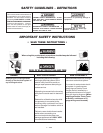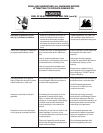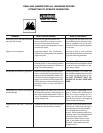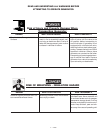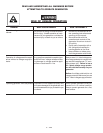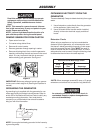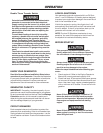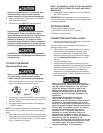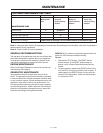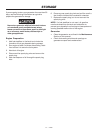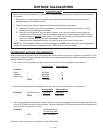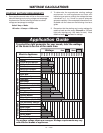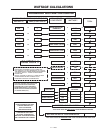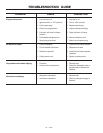
12 — ENG
TO START THE ENGINE
(Recoil start/Pull start)
Never run engine indoors or in enclosed, poor
ventilated areas, engine exhaust contains
carbon monoxide, an odorless and deadly gas.
1. Open the fuel shut-off valve. Turn counter clock-
wise until the valve stops. See Figure 7.
2. On the engine there is a ON/OFF switch located on
the front panel of the engine. Place this switch to
the "ON" position.
3. Move the choke control located on the engine to
"CHOKE" position.
NOTE: No choke is required on warm engines. Make
sure choke is in the "RUN" position on warm engine
starts.
4. Grasp handle on rope starter and pull slowly until
resistance is felt. Let the rope rewind slowly. Pull
rope with a rapid full arm stroke. Let rope rewind
slowly. Repeat if necessary.
OR
Figure 7
NOTE: IF ENGINE OIL LEVEL IS TOO LOW, ENGINE
WILL NOT START. CHECK OIL LEVEL AND ADD IF
NECESSARY.
5. When engine starts, gradually move the choke to
the "RUN" position.
IMPORTANT: Allow generator to run at no load for 5
minutes upon each initial start-up to allow engine and
generator to stabilize.
STOPPING ENGINE
1. Disconnect all electrical loads.
2. Turn ON/OFF switch to "OFF" position.
3. Close fuel shut-off valve.
CONNECTING ELECTRICAL LOADS
1. Let engine run and warm up for five minutes after
starting with no electrical load.
Connect loads in the following manner to prevent
damage to equipment:
2. Connect inductive load equipment first, inductive
loads consist of refrigerators, freezers, water
pumps, air conditioners, or small hand tools.
Connect the items that require the most wattage
first. See Wattage Calculation Section in this
manual.
3. Connect the lights next.
4. Voltage sensitive equipment should be the last
equipment connected to the generator. Plug voltage
sensitive appliances such at TV's, VCR's, micro-
waves, ovens, computers, and cordless tele-
phones into a UL listed voltage surge protector,
then connect the UL listed voltage surge protector
to the generator.
Failure to connect and operate equipment in
this sequence can cause damage to equipment
and will void the warranty on your generator.
Follow the wattage calculation table in the
Wattage Calculation section of this manual.
Overloading the generator will cause power
fluctuations and can damage equipment and
appliances.
Porter-Cable Corporation will only be
responsible for damage to customer's
equipment when the generator is determined to
be defective. This determination will only be
made by an authorized representative of Porter-
Cable Corporation and this decision will be final.
Porter-Cable Corporation reserves the right to
inspect the electrical connections at the
customer's site of operation and test the
generator for proper operation before any
determination of liability is made. Failure to
maintain the equipment or wiring for inspection
will void any claim for damages by the
customer. Porter-Cable Corporation will not be
responsible for equipment damaged as a result
of voltage surges, improper operation or
improper installation of the generator.
Never run engine indoors or in enclosed, poor
ventilated areas, engine exhaust contains
carbon monoxide, an odorless and deadly gas.
3. Make sure generator is grounded in accordance
with local requirements.
4. All electrical loads MUST be disconnected
Engine speed has been factory set to provide
safe operation. Tampering with the engine
speed adjustment could result in overheating of
attachments and could cause a fire. Never
attempt to “speed-up” the engine to obtain
more performance. Both the output voltage and
frequency will be thrown out of standard by this
practice, endangering attachments and the user.
You MUST unplug any load from the generator
before starting to prevent permanent damage to
any appliances.



